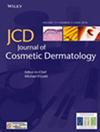Long linear scars in cross-sectional regions can adversely affect facial aesthetics and functionality, leading to substantial psychological distress. Early intervention with carbon dioxide ablative fractional laser (CO2-AFL) and 595-nm pulsed dye laser (PDL) has shown promise in mitigating post-surgical scarring. However, the effectiveness of this treatment for extensive facial scars across different areas remains unclear.
We reviewed medical records of 39 patients with long scars from facial trauma between January 2022 and October 2023. Treatment commenced with two sessions of PDL and three sessions of CO2-AFL 1 week post-suture removal. Outcomes were assessed using Antera 3D imaging and the Patient and Observer Scar Assessment Scale (POSAS 3.0). Quality of life improvements were measured using the Short Form-36 Health Survey (SF-36).
All patients completed five sessions of laser treatment. Significant reductions were noted in Patient and Observer scores on the POSAS (p < 0.05). Antera 3D analysis revealed substantial improvements in average roughness, depression depth, and elevation depth across facial regions. The significance of improvements in color variation, texture elevation span, melanin hyperconcentration, and hemoglobin hyperconcentration varied by area. Patients also showed significant improvements in SF-36 scores for physical role limitations, social functioning, and emotional well-being compared to pre-treatment levels (p < 0.05).
Early sequential treatment with PDL and CO2-AFL effectively improves long scars in various facial areas.



